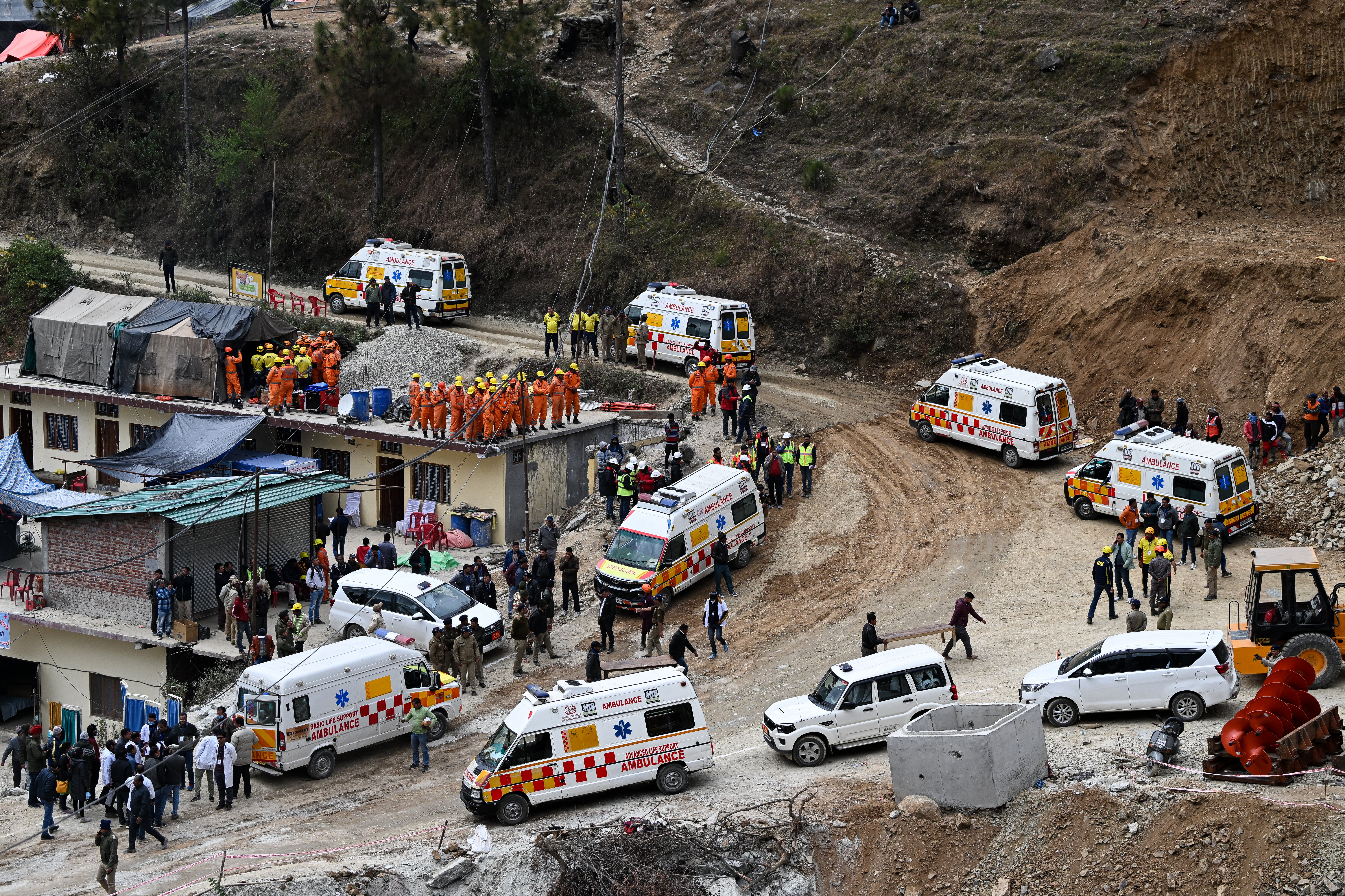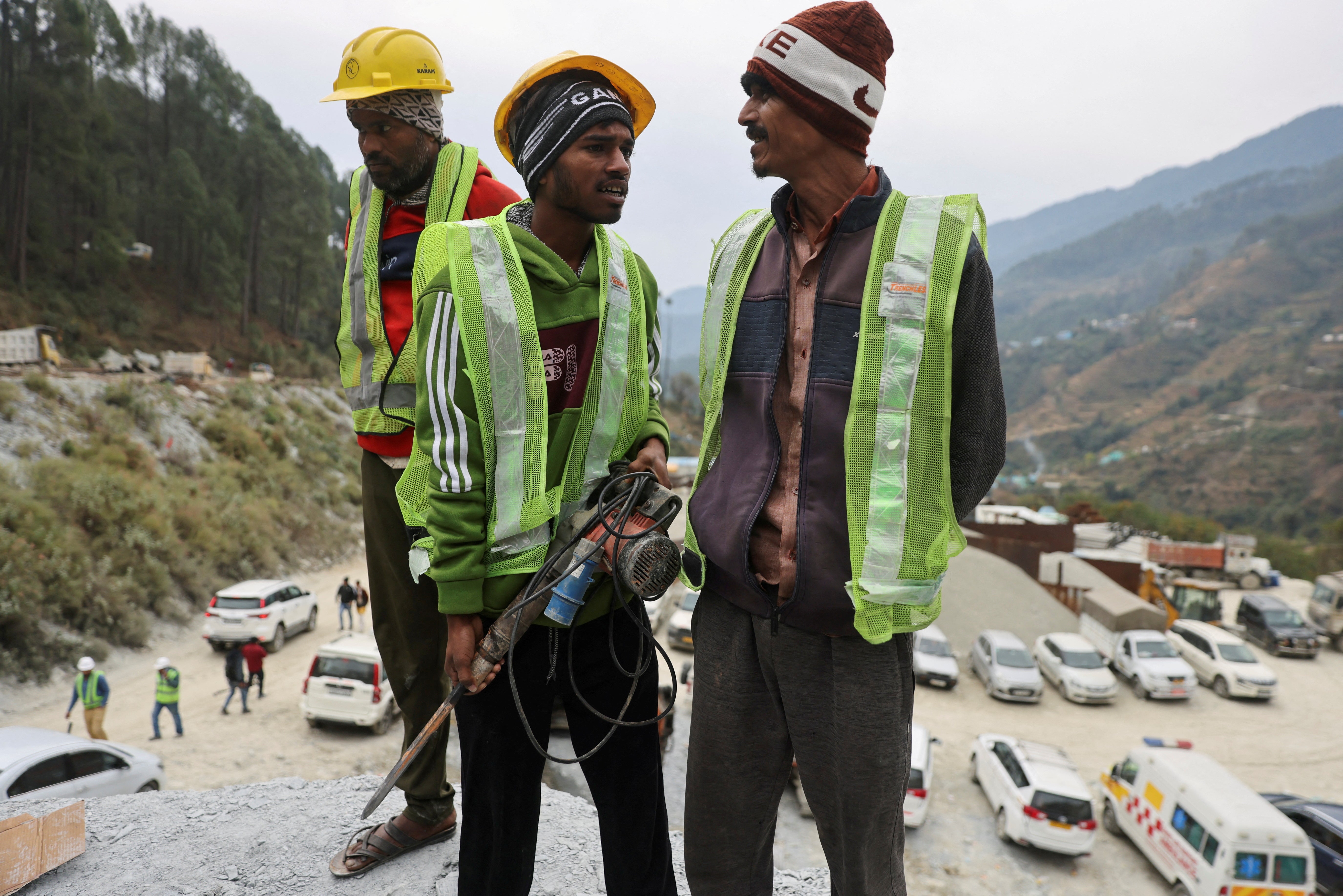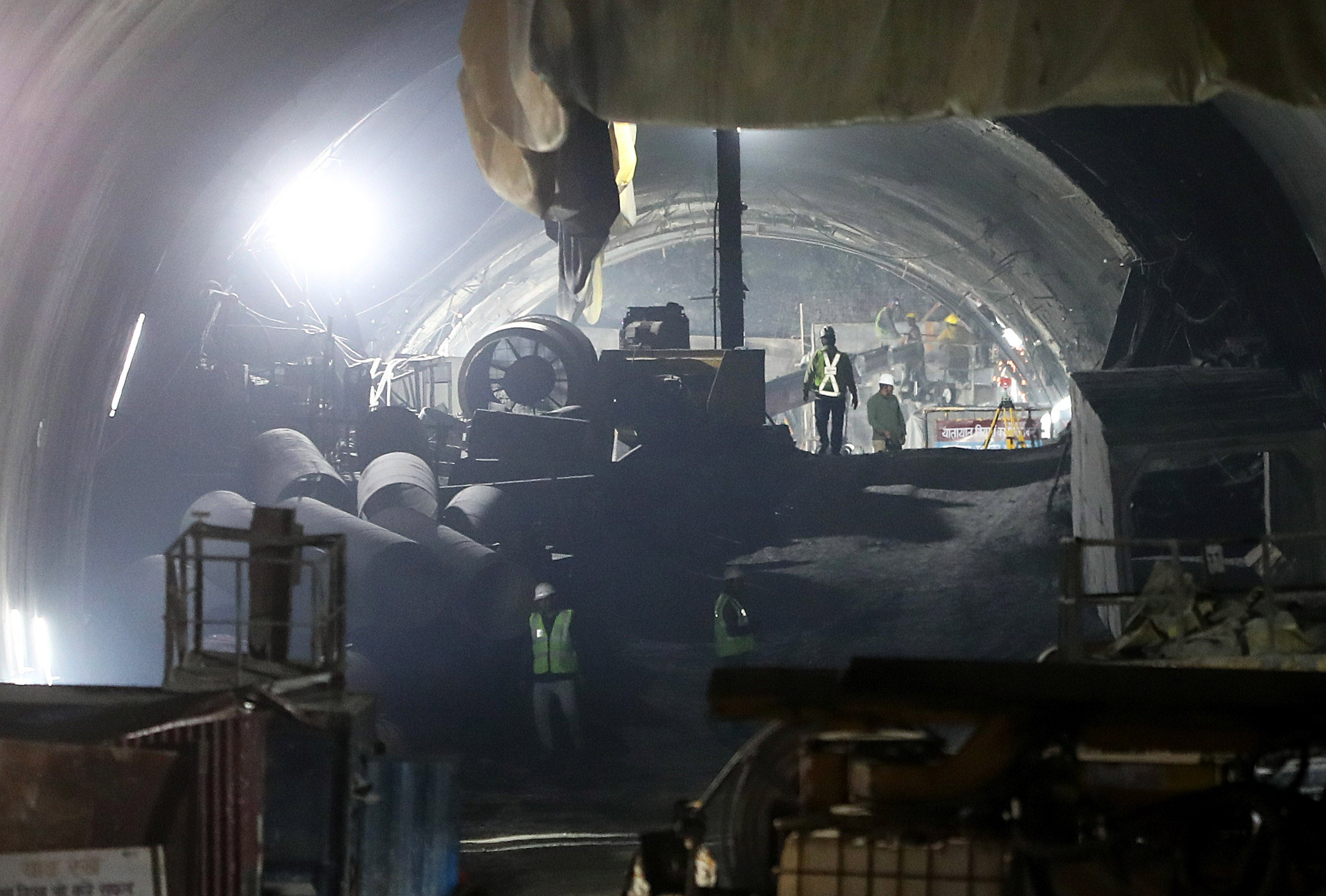India tunnel rescuers break through debris to reach trapped workers after 17 days
Breakthrough in 17 days of struggle to free the men come as specialised ‘rat-hole miners’ are called in to manually clear debris
Rescue teams have successfully drilled through 60m (197ft) of debris to reach 41 construction workers who have been trapped in a collapsed tunnel in India for the past 17 days.
The migrant labourers have been stuck in the Silkyara tunnel in the northern Indian state of Uttarakhand since it collapsed on 12 November.
Uttarakhand chief minister Pushkar Singh Dhami said that the work of inserting a pipe inside the tunnel has been completed and all the workers will be pulled out soon.
“Soon all the labourer brothers will be taken out,” he said.
The men are set to be pulled out one at a time on a wheeled stretcher through the pipe, which has a diameter of just 90cm (3ft). Officials said the process should be completed within a couple of hours.
Medical teams and dozens of ambulances are on standby to take the men to a hospital about 30km away.
Rescue officials said the pipe that would be used for their escape has to be pushed through and debris cleared before rescue workers could crawl through and begin getting the men out.

In a press briefing on Tuesday evening, a National Disaster Management Authority (NDMA) official said that the rescue operation could take three to four hours more and they could be only airlifted to the hospital in the morning.
Syed Ata Hasnain said “rat-hole miners” had reached the 58-metre point but they had two more metres to go.
“All safety precautions will be implemented. No premature announcements are to be made, it will be against all principles. We also have to take care of the safety and security of people who are rescuing the workers... We are not in any hurry,” he said.
The breakthrough in the 17 days of struggle to free the men came as “rat-hole mining” work commenced on Monday to manually drill and clear the debris to reach the trapped workers.
Two dozen “rat-hole” miners arrived from Delhi and Jhansi cities to enter the tunnel and dig it manually after an auger drilling machine broke down multiple times.
These miners get their name from their technique of extracting coal through narrow pits and crevices in the northeastern state of Meghalaya.
The workers have been trapped in an estimated 2km (1.2 miles) area since the collapse that happened about 200m (650ft) from the tunnel entrance.

Rescue workers faced the task of drilling through 60m (197ft) of debris, filled with iron bars, concrete and other construction materials to reach the workers.
Anxious family members and others have been waiting to see their loved ones as officials said just five metres of distance separated them from the rescuers.
The rescue operation encountered several days of delays despite reaching the final stages and raising hopes due to stuck debris, falling soil and the breaking down of machinery.
Officials said all the workers inside the tunnel were safe and were provided with food, water, snacks and oxygen through a pipeline that was laid to supply water for the construction work.

A communication line was established with the trapped workers soon after the collapse and later an endoscopic camera was sent through a pipe which captured the workers’ first images.
Authorities have not confirmed what caused the tunnel to collapse as opposition party members have demanded a thorough investigation of the incident.
The under-construction tunnel was part of the Char Dham pilgrimage route, one of the most ambitious infrastructure projects of Indian prime minister Narendra Modi’s Hindu nationalist government, which aims to connect four Hindu pilgrimage sites in the mountains through 890km (550 miles) of roads at a cost of $1.5bn (£1.2bn).
The collapse of the tunnel in a region already prone to landslides has sparked debate among environmentalists about the damaging impact of construction projects in the already fragile Himalayas.
Join our commenting forum
Join thought-provoking conversations, follow other Independent readers and see their replies
Comments